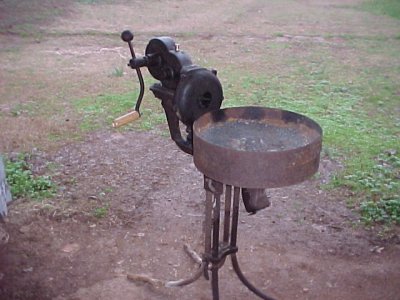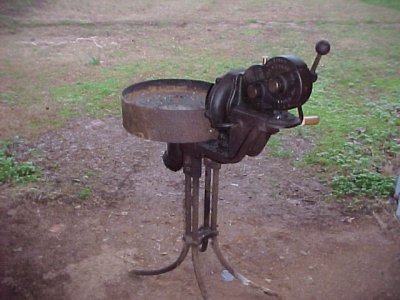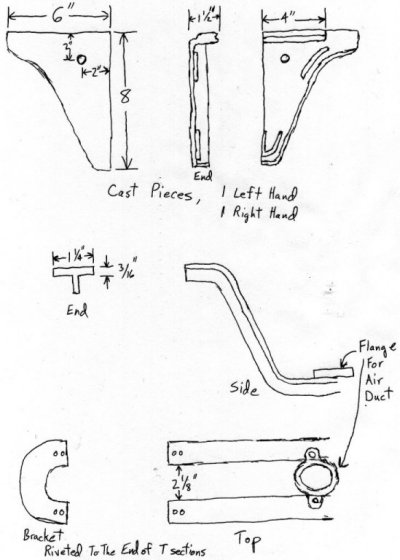

My Champion Portable Forge
Under Construction
I started my hands on experience with blacksmithing when I acquired a Champion portable forge. If I've identified it correctly, it is a Champion pan-type rivet forge. The forge pan was unlined, but I thought it would be better (to protect the pan) to line it with something. I tried firebrick first, but it's difficult to line a circular object with rectangular bricks. The advantage of the bricks was the ability to remove them and lighten the forge for moving.
I finally lined the pan with clay (plain old red clay dug up while digging a ditch). The clay allowed me to close off the outer rings of holes in the air grate. That brought the air grate diameter down to about three and a half inches and made the fire much easier to control. Previously, the air grate had been about five inches and was domed upward with the outside ring of holes angled to the sides, instead of straight up. The unlined pan would make a very large, hot fire.
The blower on this forge is a Champion 400. I have heard several opinions that this is the best blower Champion ever made. The blower mount is very simple and allows quick and easy removal of the blower. I have decided to copy this mount (with a few changes to avoid making castings) for the large forge I am currently building. I have also encountered an interest in seeing what this mount looks like, so I have a few pictures below of the forge and the blower mount.






The picture below shows the stainless steel forge cover I use when I have to take a short break from a session at the forge. If you don't recognize it, you can find one where kitchen cookware is sold and simply rivet a metal drawer pull to the bottom of the bowl. The drawer pull allows the cover to be lifted off with the poker or a pair of tongs (the cover gets hot after a few minutes).

Below is a rough dimensioned drawing of the blower mount components. With some minor modifications, this type of mount could be made by welding pieces of steel plate together. I would recommend attaching the triangular side plates (to the T-section rails) with hinges. The originals have an annoying tendancy to fall off the rails (while removing or mounting the blower) if you loosen the clamp too much.

Back to my Forge Page
A simple brakedrum forge
My new forge (currently under construction)